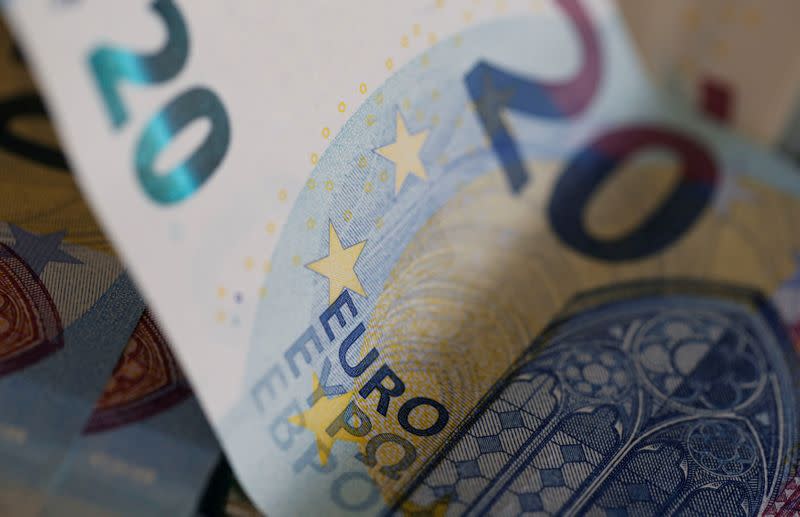Euro zone government bond yields drop before Fed meeting

By Elizabeth Howcroft
LONDON (Reuters) -Europe's government bond yields were lower on Monday, tracking moves in U.S. Treasury yields ahead of a U.S. Federal Reserve meeting on Wednesday.
Rising bond yields have spooked markets so far in 2021, with market participants worried that an economic recovery from the pandemic and fiscal stimulus could cause a spike in inflation due to pent-up consumer demand when lockdowns end.
Rising inflation could hurt bond prices as it may spur the European Central Bank to dial back its monetary stimulus.
U.S. Treasury yields were close to a 13-month peak on Monday, pushed higher by bets that economic growth in the United States will accelerate after President Joe Biden's $1.9 trillion stimulus bill got its final approval last week.
The U.S. Federal Reserve meets on Wednesday.
Germany's benchmark 10-year Bund yield was at -0.34%, down around 4 bps on the day , setting its biggest daily fall since March 1. The yield peaked at a one-year high of -0.203% on Feb. 26 and has since stabilised below this level.
The Italian 10-year yield was down around 3 bps at 0.605%.
A market gauge of long-term euro zone inflation expectations rose above 1.50% for the first time since March 2019.
The recent increase in commodity prices is contributing to the rise in the inflation expectations gauge, which can be driven by short-term factors, said Lyn Graham-Taylor, rates strategist at Rabobank.
"Most of the clients that we speak to don’t really buy into that we’re in this new regime of higher inflation, but they’re concerned that other people think we are," he said.
The gap between U.S. and German 10-year yields was at its widest since February 2020, a divergence which analysts said was due to the larger fiscal stimulus in the United States and Europe's underperformance in vaccine rollouts.
Italy announced new, tighter COVID-19 restrictions on Friday after infections rose. France is also grappling with rising cases.
"Relative to our previous assumptions, we now expect no significant easing in the euro area until early May, but see a faster unwind of restrictions in the UK as it leads Europe’s reopening by around a 1½ months," Goldman Sachs strategists said in a note.
At its meeting last week, the European Central Bank said it would increase the pace of its bond-buying to limit the rise in yields.
"We expect the impact to be transitory, but sufficient to drive further widening of the USD-EUR rates differential," wrote ING strategists in a note to clients.
Germany's Christian Democrats slumped to record defeats in two regional votes on Sunday, dealing a setback to the party which faces federal elections in September without Chancellor Angela Merkel.
Elsewhere, France hired a syndicate of banks for the launch of a new green bond, according to memos from three lead managers seen by Reuters.
(Reporting by Elizabeth Howcroft, Editing by Marguerita Choy)

 Yahoo Finance
Yahoo Finance 